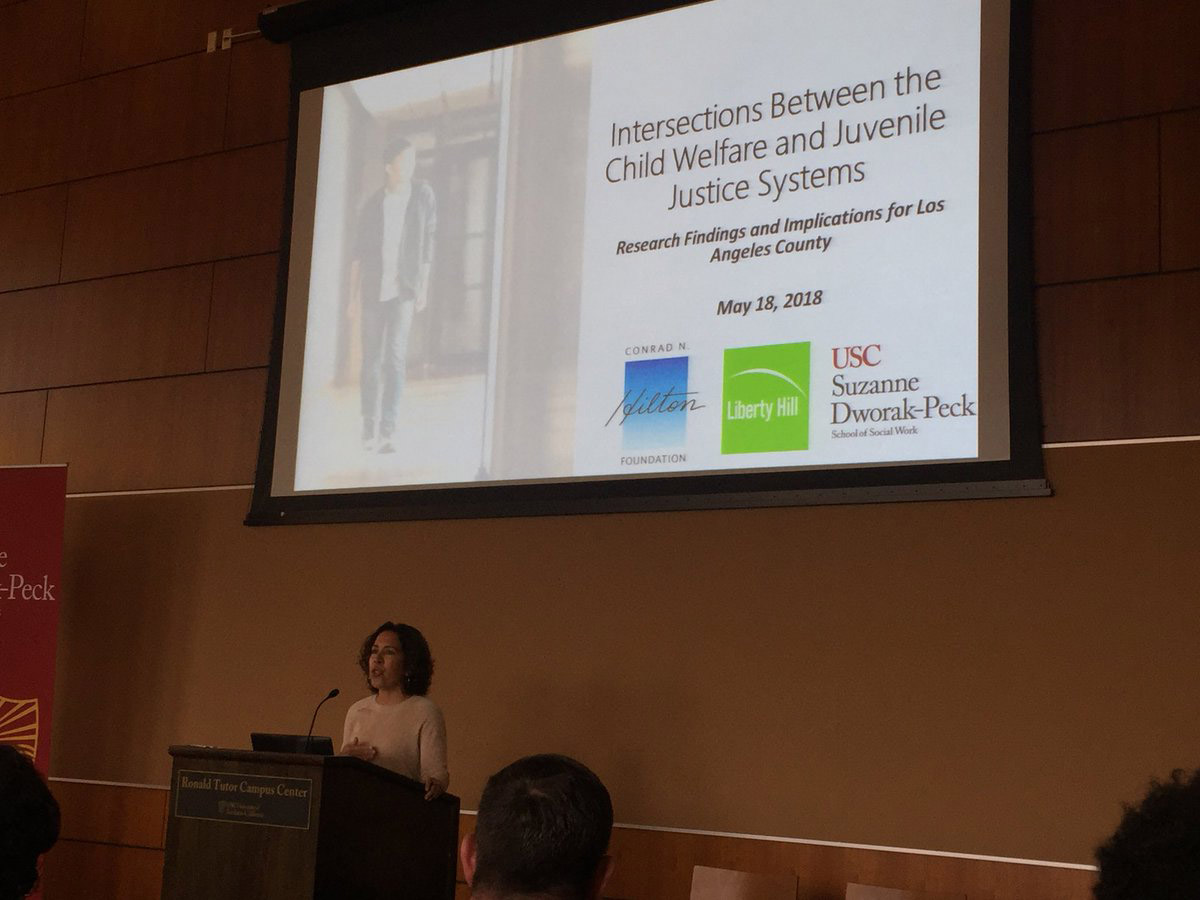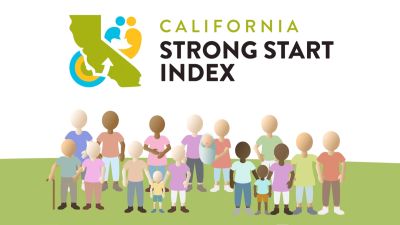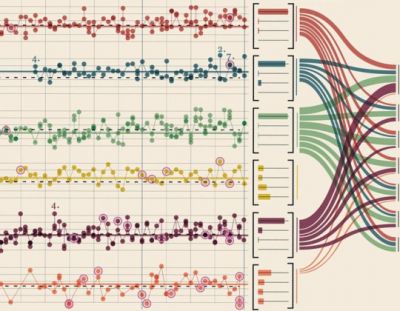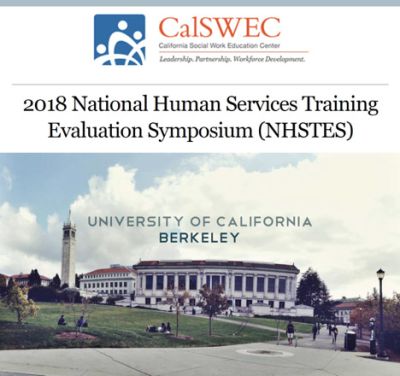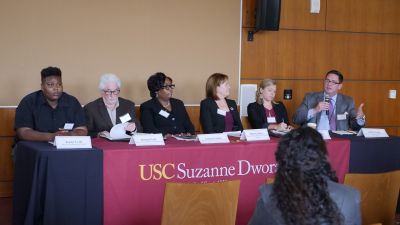New Findings on Two-Generation Child Protection System (CPS) Involvement: Children with Mothers in Foster Care
The CDN has three new publications on mothers in foster care and their children-all published this month!
The first, Pregnant and Parenting Youth in Care and Their Children: A Literature Review published in the Child and Adolescent Social Work Journal, examined pregnant and parenting mothers in foster care and their children by identifying and summarizing all relevant studies published between 2011 and 2017. Combined, these studies demonstrate the need for tailored pregnancy prevention services, supports for parents, and future research that focuses on identifying strategies to improve two-generation outcomes.
The second study was a linked, quantitative analysis that identified children born to mothers in foster care and documented CPS involvement among their children for the first 3 years of life. The study, An Examination Of Child Protective Service Involvement Among Children Born To Mothers In Foster Care published in Child Abuse and Neglect, found that about half of children born to mothers in care were reported for alleged maltreatment by age 3, but that proportion has declined over time (i.e., from 63% of children born to mothers in foster care in 2009, to 46% in 2012). Variation in risk of report also emerged when dyads were grouped using a Latent Class Analysis (LCA). The data identified a number of risk factors available in the mother’s CPS and the child’s birth records that are known at the time of the child’s birth; these factors could be used to develop programs that better fit the needs of mothers in care, assess the effectiveness of these programs, and replicate policies that are improving outcomes for mothers and children.
The third study, A Content Analysis of Case Records: Two-Generations Of Child Protective Services Involvement, was the first to leveraged unstructured, case narrative fields in CPS records to enhance knowledge about children born to mothers in care. A content analysis was conducted to assess reasons described for CPS involvement among children who were born to mothers who were in foster care on or after the estimated date of conception and reported to CPS during the first 3 years of life. Thirteen mother-child dyads from each of the three distinct classes identified in study 2 were selected for a detailed examination of mother and child case records (N=39). Study findings illustrate the importance of linking parents to services that meet their unique needs and those of their children.
These three studies add depth to the understanding of factors associated with the maltreatment of children born to mothers in foster care and demonstrate the importance of two-generation strategies.
For links to the papers and more information, please visit our project page: Child Protective Services (CPS) Involvement among Children of Mothers in Foster Care.
California Strong Start Index
Could information from birth records, thoughtfully assembled and simply scored, be used to help communities more efficiently and equitably allocate resources?
This question emerged during a conversation among colleagues from the Children’s Data Network, First 5 Association, and Heising-Simons Foundation. We had gathered to discuss the challenges County Commissions, service providers, funders, legislators, and advocates face when assessing the service needs of families with young children.
Due, in large part, to a dearth of recent, publically available data on young children and families, we lamented that they have to conduct costly community needs assessments, use survey-based county estimates for neighborhood-level program planning, extrapolate historical data about adults into actionable information about current families with newborns, and base many decisions on a community’s poverty level – there had to be a better way!
The idea for the California Strong Start Index was born.
Successful proof-of-concept analyses funded by First 5 LA and the Orange County Commission on Children and Families confirmed that administrative birth records could be used to not only better characterize the changing demographics and birth outcomes of babies born in LA County, but also help Los Angeles County chart a course toward universal and targeted Home Visiting. And First 5 colleagues immediately recognized the potential for an index comprised of information from administrative birth records to provide recent, specific, holistic, and asset-focused information about the children they were charged with supporting. Geocoded records could be aggregated and viewed at a state level, but also provide granular, local information to support equitable resource allocation. These child / family-level indicators could be flexibly overlaid with other community-level indicators or indices. These data could develop a much more complete picture of our state’s children. And they could be easily updated for each new cohort of children born.
In partnership with the First 5 Association, Heising-Simons Foundation, and First 5 County Commissions, we are proud to announce the launch of the California Strong Start Index. This powerful, but simple tool uses data that already exist for children and families to summarize, in a standardized way, the conditions into which children are born. It comprises a total of 12 variables that fall into four domains. A birth asset score is calculated by simply counting the number of assets present (0-12). The Strong Start Index allows us to characterize the number of assets children have at birth, including how California communities vary in the distribution of children at different asset levels.
Please visit www.strongstartindex.org to view the animation, explore the data, and to learn more about how communities are using it to facilitate equitable investment in the children and families of California. And please see our project page for detailed methodological documentation.
Do Good With Data: We’re Hiring!
Do you love tasks related to data management? Statistical analyses? Leveraging those skills to inform programs and policies for young children and their families? Then we welcome you to apply to be our new full-time Research Programmer/Database Analyst. We are looking for someone who can assume responsibility for a range of tasks related to data management and statistical analyses.
This person will:
- Work closely with our database analyst, senior statistician, IT staff, public agency partners, doctoral students, and PhD-level researchers to manage administrative records and conduct applied analyses.
- Support the development of the CDN’s linked administrative database by assuming responsibility for SQL tasks, including the preparation of raw data extracts received from agency partners for record linkage (e.g., coding, cleaning, standardizing).
- Support the preparation of analytic files for researchers at the CDN, including harmonizing variables across years, developing coding protocols for derived fields, supporting meta-data documentation, and running descriptive statistics and multivariable models.
- Contribute to the development of data and research products (e.g., metadata, technical reports, empirical papers).
They will be expected to have the following technical skills:
- Master’s degree in biostatistics, computer science, or related field.
- Advanced skills in programming and experience in database management.
- Sufficiently detailed understanding of statistical software (Stata/SAS/R) to effectively collaborate with the CDN research team.
Candidates should enjoy working both independently and collaboratively in an academic environment, possess excellent organizational skills and the ability to balance multiple tasks, and have an interest in applied and policy-focused research.
Data in Action
On November 21, 2018, the Housing Authority of the City and County of Los Angeles was awarded 157 housing vouchers through U.S. Department of Housing and Urban Development (HUD)’s Family Unification Program (FUP). These vouchers are earmarked for youth at risk of homelessness (and specifically, young adults 18-24 who have aged out of the foster care system) and families whose lack of adequate housing is the primary reason their children are in foster care.
The CDN’s record linkage between Los Angeles County Homeless Services Authority (LAHSA) and Child Protection records generated information critical to securing this funding.
LAHSA Brown Bag
On Sept 25th, the CDN hosted its latest Research Brown Bag, this time focusing squarely on the issue of family homelessness. CDN’s own Regan Foust presented findings from a linkage between LA County Homeless Services Authority (LAHSA) and statewide child protection records.
The results highlighted the striking increase in the number of parents accessing homelessness services in LA since 2013 and the substantial proportion (65%) who also were known to the Child Protection System (CPS).
Given that CPS involvement most often preceded first LAHSA encounter, the results underscore the importance of providing trauma-informed services, and the value of cross-system coordination in the provision of those supports. They also highlight opportunities for prevention, as prevention-oriented family support and strengthening could have helped to resolve family problems at an earlier stage, potentially preventing later entry into homelessness. Finally, given that relatively few families had open child protection cases or children removed from the home, these results should spark a conversation about the appropriate CPS response.
For more information, please visit An Exploration into the Characteristics, Service Needs, and Child Protection Involvement of Families Accessing Services through the Los Angeles County Homeless Services Authority
One Third of American Children are Investigated for Maltreatment by Age 18: A Convening to Discuss Implications for the Child Welfare System in Los Angeles
On August 6, 2018, public and private sector leaders, funders and researchers met at the University of Southern California to hear findings from recent research on patterns of referral, investigation, and involvement with child protective services (CPS) and discuss their implications for the child welfare system in Los Angeles County. The meeting was convened by the Children’s Data Network at the Suzanne Dworak-Peck School of Social Work, sponsored by the Ralph M. Parsons Foundation with support from First 5 LA, the Conrad N. Hilton Foundation, and the Heising-Simons Foundation.
Research Findings
Chris Wildeman, Professor and Director of the Bronfenbrenner Center for Translational Research at Cornell University, presented findings based on analysis of data from two national child welfare data systems (i.e., the Adoption and Foster Care Analysis and Reporting System (AFCARS) and the National Data Archive on Child Abuse and Neglect (NCANDS)) indicating that 37% of American children will be investigated by CPS for alleged maltreatment at some point during childhood. This cumulative risk of CPS contact is particularly startling because the child welfare system is often thought of as being a relatively small system concerned only with children at high risk for abuse or neglect. Indeed, point-in-time data showing how many children are involved with the CPS system during a particular month or year generally include a small percentage of the population. Dr. Wildeman’s research suggests that while contact appears to be relatively rare at any moment in time, CPS contact at every level – including referrals, investigation, case openings, foster care, and termination of parental rights – is not rare at all when considered from the perspective of children and families over the course of childhood. His research also indicates substantial inequality in the cumulative rates of child welfare system contact. Specifically, his findings indicate that about 50% of African-American children will experience a CPS investigation and roughly 20% will be substantiated as victims.
Emily Putnam-Hornstein, Associate Professor at USC and Director of the Children’s Data Network, presented similar findings based on analysis of California birth and CPS records. The cumulative rate of CPS involvement for children born in LA County was somewhat lower than the national estimate, but (conservatively) more than 1 in 4 (27.8%) children were reported to CPS for alleged abuse or neglect before they turned 18. The highest rates of referral were for African-American (45.0%) and Hispanic (29.6%) children, followed by White (21.0%) and Asian (13.7%) children. Of these, about 1 in 10 referrals were substantiated (9.5%), with similar disparities observed in terms of race/ethnicity.
Panel Responses and Discussion
A distinguished panel of respondents opened discussion after the research presentations, including: Bobby Cagle, Director of the Department of Children and Family Services (DCFS); Judge Michael Nash, Director of the Office of Child Protection (OCP); Fesia Davenport, Assistant Chief Executive Officer; and Armando Jimenez, First 5 LA’s Director of Measurement, Learning and Evaluation. All of the panelists expressed concern about the underlying findings from the studies including the cumulative risk of system involvement for all children and the disproportionate involvement of African-American children. They also noted that preventing child maltreatment is a shared responsibility, with no one agency or department able to do the job alone.
Mr. Cagle noted a 25% increase in calls to the Child Protection Hotline in 2016-17 compared with the previous year. He described the DCFS leadership team’s commitment to working with multiple partners around prevention and early intervention. Some of the programs that are already underway include: a joint project with law enforcement and school districts to create CARES, a non-emergency call in number for reports on non-emergency matters; new approaches to working with the Department of Mental Health to better serve families involved with both departments; and the Community Prevention Linkages program where families reported to the Child Protection Hotline may be assessed for support and service needs and referred to community-based Prevention and Aftercare networks after it has been determined that there is no need for an in-person Emergency Response investigation.
Judge Nash pointed to the importance of having more meaningful and systematic ways to assess risk in order to decrease demands on the system, and noted that we also need to develop more effective ways to deal with racial and ethnic disproportionality. He also described progress that the OCP and its partners are making in implementing the major prevention strategies described in their June 2017 report, Paving the road to safety for our children: A prevention plan for Los Angeles County.
Ms. Davenport highlighted the importance of coordinating care across county departments and with community partners, including the need for better ways to share information across departments and organizations. She invited the audience to consider out-of-the-box ideas about prevention. For example, what role could the Department of Public Social Services play? How might DPSS staff go beyond determining eligibility to guiding and helping families to find other kinds of resources and support in their communities? How could other departments be more effective partners in prevention? She asserted that we need to move beyond pilot programs and demonstration projects and begin building more effective prevention strategies into the “DNA” of county departments if we want to see better outcomes for children, families, and communities.
Mr. Jimenez suggested that we need partnerships in order to come up with innovative ideas and solutions, not just to help implement new programs after solutions have already been determined. New partners can bring new ways of thinking about complicated problems including how we better define risk in different contexts and how we translate “trauma-informed care” into practice. We also need to better understand how some families find ways to thrive in spite of their challenges, and the kinds of community and family support that build resilience. In relation to that and other questions, it is especially important to engage families in coming up with ideas and solutions that would work for them and their communities.
A lively discussion following the panel presentations generated a number of key questions and ideas:
- How do we more effectively address the high volume of referrals? Can we intervene in a non-punitive prevention-oriented way, creating a non-CPS track where family needs are addressed without requiring intervention from the CPS system?
- We need to be aware of the fear generated by attention from the CPS system. Are there other approaches that would allow families to seek help without fear of punishment?
- We need to re-think traditional ways of responding to family problems from the perspective of family strengthening and prevention. For example, counseling does not get families out of poverty. It isn’t a surprise that our current system is giving us what we are getting. CPS is a limited response, not a true reflection of the full array of services families need in order to thrive. We need to think differently about how systems can work more effectively together. How do we break away from what we’ve always done so we can start doing things that are more effective? It is vital to engage with communities, but engagement cannot be a solution by itself. How do we invest in communities in ways that develop real solutions? We need to focus on strengths, building up and trying to replicate the factors correlated with community strengths. And we need to engage communities in honest discussions about what works.
- Obviously we need to respond to the ethnic/racial disparity and disproportionality reflected in these data. A lot can be attributed to economic factors, which are important, but not everything.
Taken together, the research and discussion underscored the continued importance of Los Angeles County’s efforts to coordinate services so that families are supported and children protected, and an urgent need to address the disproportionate representation of children and families of color in our child welfare system. The Office of Child Protection has made a good start, with the help of DCFS, other departments and a number of community partners, but more help is needed to build supports and resources for families in communities throughout the county.
CHHS Annual Record Reconciliation
We are proud to announce that the California Health and Human Services (CHHS) Agency, in partnership with the Children’s Data Network, has completed its first ever “record reconciliation” that links and organizes administrative, client-level records across eight major CHHS programs (i.e., CalFresh (aka Supplemental Nutrition Assistance Program); CalWORKs (aka Temporary Assistance for Needy Families); Child Protection; Developmental Services; Family Planning, Access, Care, and Treatment (Family PACT); In-Home Supportive Services; Women, Infants, and Children (WIC)); and Medi-Cal.
Through the creation of an encrypted master “intra-agency” client identifier, this project facilitates the exchange of statistical information both within and between individual CHHS departments and the generation of important information about service involvement at a client and population level. In short, it is helping to break down program siloes and create a more holistic view of clients and their cross-program experiences.
“The program-centric nature of California’s health and human services data has made it challenging for us to make decisions that reflect a client’s end-to-end experiences. Despite efforts to assemble data within individual departments, this is our first unified effort to systematically connect records across our largest public service delivery programs,” said Adam Dondro, CHHS Agency Information Officer.
This new initiative follows other recent CHHS efforts to promote innovation and improve coordination by making better use of data, including the launch of its Open Data Portal. “This Record Reconciliation will allow us to achieve better outcomes for all Californians through a richer evaluation of policy options, the improved stewardship of taxpayer dollars, and a more coordinated design and delivery of public services,” said Michael Wilkening, Secretary of CHHS. “We have long known that our programs are serving many of the same clients. Now we have organized our data so that we can directly assess the implications of both budget cuts and program investments on individuals and their families.”
For more information about the project and to access program-specific results, please visit: https://www.datanetwork.org/research/chhs-record-reconciliation-and-research-data-hub/
Data In Action: Helping Los Angeles County Chart a Course Toward Universal and Targeted Home Visiting
Connecting the Dots, an informational resource coordinated by the Children’s Data Network (CDN) and funded by First 5 LA, is a cross-sector partnership committed to making data and research more accessible to those engaged in the development of public policy and the delivery of programs for children and families.
The goal of this year’s project was to inform Los Angeles County Board of Supervisors motion: Strengthening Home Visiting in Los Angeles County: A Plan to Improve Child, Family, and Community Well-Being by exploring how best to expand home visiting services so that there is a universal system (i.e., offered to every mother giving birth countywide) within which families at highest risk of adverse outcomes are prioritized for more intensive services.
To that end, we conducted a landscape analysis of all evidence-base home visiting programs currently operating in LA County. The resulting report, Newborn Home Visiting Programs: In Los Angeles County: A Primer, presents each program’s goals, intensity, funding streams, and catchment areas (visualized as a map). In addition, we leveraged birth and child protection data to produce slot estimates and align existing local programs with community risk profiles in LA County.
Please visit the Project page for more information: Helping Los Angeles County Chart a Course Toward Universal and Targeted Home Visiting
National Human Services Training Evaluation Symposium
On May 23rd, 2018, California’s research project on predictive risk modeling (PRM) was presented at the National Human Services Training Evaluation Symposium in Berkeley, California. Dr. Emily Putnam-Hornstein from the Children’s Data Network (CDN) and Ms. Mary Lau and Ms. Jennie Feria from the Los Angeles County Department of Children and Family Services (DCFS) gave the research keynote address, Predictive Risk Modeling: A Tool for Data-Driven Decision Making. These collaborators shared how PRM can bridge the gap between research and practice. A recording of the keynote address can be viewed here.
Ms. Lau is the manager of Outcome and Analytics Section and has spearheaded efforts to shape DCFS’ Data Driven Decision Making efforts both within the department and on a national platform. Ms. Feria is the Division Chief of the Child Protection Hotline Division and manages a staff of 240. Los Angeles County shared how they are creating an agency culture for data-driven decision-making and incorporating research and data into the organization’s daily practice at the Hotline Calls Division.
The presenters shared lessons learned from their respective work in data driven decision-making. Lessons learned from the PRM research project show that that openness and transparency should be the rule, not the exception. This means public agencies, not vendors, should own model code and weights, and that independent validation of model performance and independent evaluation of its implementation and impact should be features of all initial PRM efforts. Algorithmic accuracy should be assessed for children of different races/ethnicities and unwarranted disparities should be addressed. Communities should demand (and receive) information concerning how the model is being used and how the model performs. PRM should be initially implemented to augment and complement clinical judgement and other approaches to assessment, not as a substitute. Once implemented, models can and should be re-weighted and re-validated on an ongoing basis in order to maintain accuracy. Finally, PRM must be efficient and simple to administer and agency culture must be supportive.
We are proud to have presented our work alongside our county partners to underscore the value of data in improving practices that support families.
Event: Intersections Between the Child Welfare and Juvenile Justice Systems — Research Findings and Implications for Los Angeles County
Last week, the Liberty Hill and Conrad N. Hilton Foundations, in partnership with the USC Suzanne Dworak-Peck School of Social Work, hosted a meeting focused squarely on crossover youth. The convening, with about 75 influential attendees, began with a presentation of recent data concerning dually involved youth in both Los Angeles County and nationally.
Implications for practice and policy were discussed by a group of distinguished panelists, including Bobby Cagle (Director, Department of Children and Family Services), Felicia Cotton (Deputy Chief, LA County Probation Department), Judge Michael Nash (Director, Office of Child Protection), Michelle Newell (Deputy for Youth, Justice and Education, LA County 2nd District), Barbara Duey (Children’s Law Center of California), and Taylor Lytle, a youth with lived experience in the juvenile justice and child protection systems and now an advocate for dually-involved youth.
Please click on the following links for more information:
Slide Deck: A Brief Update on Dual Systems Youth Research, Herz & Dierkhising
Crossover Youth Report: Los Angeles County Probation Youth With Previous Referrals To Child Protective Services
We would like to thank the supporters and attendees of this exciting event for the privilege of presenting research that better characterizes this vulnerable population in LA County and for enhancing our perspective about this important issue.
